October 2nd
5:24 PM – 6:09 PM
68 degrees
Hello, everyone!
At the start of my fifteen-minute observation, I thought not much had changed in my spot. However, I was soon able to notice many differences – some small and others much more notable. I feel the biggest changes were closely related to each other: the temperature was much cooler, there was a large reduction in insect noise, and even though the tree was still completely green, the ground surrounding it was carpeted with fallen yellow and brown leaves. I’m still not completely sure about the type of tree – I know the leaves are similar to ash trees, and ash trees on campus have been affected by that disease that could be the reason for the bare branches, but I keep forgetting to check if the leaves are opposite or alternate. Next time I will have an identification!
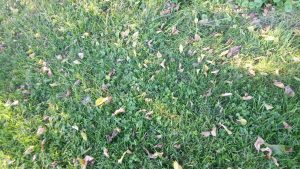
fallen leaves
Another big change had to do with one of my three focus objects – the plant I had chosen to observe had lost all of it’s leaves! At first, I was extremely confused; I thought it had somehow disappeared completely because the remaining thin stem was so difficult to find. However, I noticed some similar plants in the area seemed to be in the same process of losing leaves – they were all drooping and graying. Since these other plants were experiencing similar changes, I imagine it must be a seasonal process.
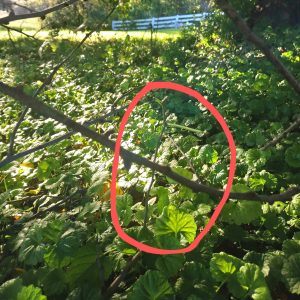
the bare stem of my chosen plant
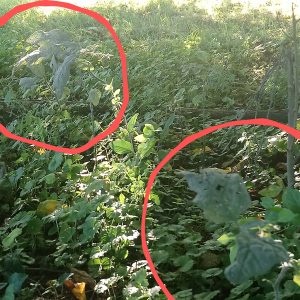
other similar plants also losing leaves (?)
During this initial observation, I was a little concerned that I would not be able to find an invertebrate, and if I did, I wouldn’t be able to follow it in the thick undergrowth for ten minutes. Luckily, one joined me on my blanket for most of my visit. It seemed to be a small planthopper (genus Acanalonia?) that blended perfectly with the ground cover. I’ve never observed a bug that acted like it did; it seemed to stretch its front legs very often, like it was sensing things through touch. It mostly stayed in one place, occasionally turning in half circles to look either in my direction or the direction of the tree. When I didn’t know what insect it was, it’s tendency for sudden backflips accompanied by a loud clicking sound was very surprising.
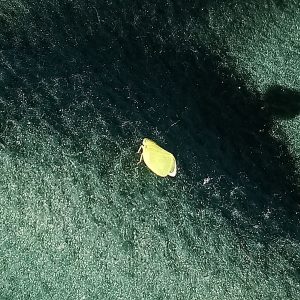
planthopper
I wasn’t sure how much I would be able to talk about water for this spot, but I realized there was a lot to consider! The recent rainfall made this a great time to think about water. The ground under the tree was still wet, which made it easy to think about water’s relation to the soil and plants. The soil was very dense and claylike, which says a lot about the type of plants there. They must be able to draw water despite what must be a high wilting point. It probably helps that there is less evaporation through stomata because the plants are so heavily shaded. It also seems the damp ground and copious amount of shade lent itself to new growth – there was a mushroom growing near me that hadn’t been there before!
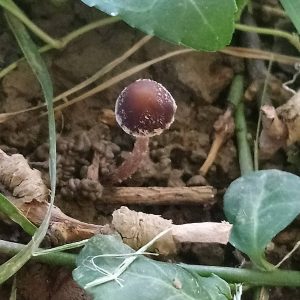
mushroom
Overall, I definitely think I was able to make better observations this time. Focusing on specific things like water and insects was much easier to do than my first general description. I enjoyed the prompts for this journal, and I’m excited for my next visit.


Hi Kady! It’s so funny that you saw a backflipping planthopper! That made me laugh, it must have been very unexpected. Also, its so cool that you saw a mushroom! I wonder what kind it is, and if there will be more next time you are there.
NICE – loved the plant hopper – there is so very much to think about once you settle down and look! Water is really everywhere – think about field capacity and photosynthesis and humidity and on and on….looking forward to more!